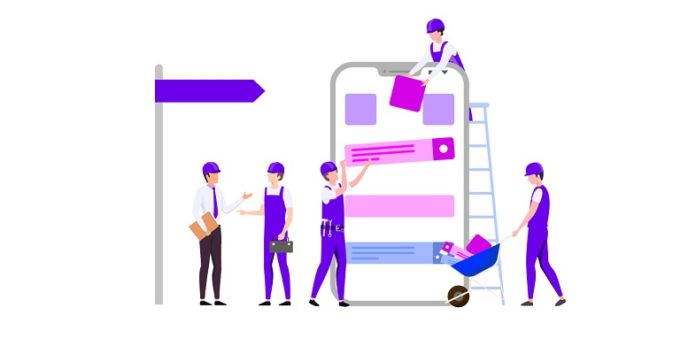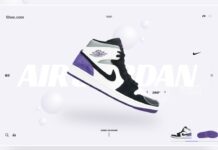The world has been moving towards digitalization, so technology and mobile applications have gradually entered the lives of many people with the massive development of many technology giants, along with a large investment. Thanks to mobile applications, businesses can create brand awareness to customers, provide personalized content, enhance interoperability between businesses – customers, and are more convenient to use promotional tools.
Obviously, mobile applications are increasing global coverage at a fast pace, with 1.96 million apps appearing in the App Store and 2.46 million apps available on Google Play (as of Q2 2019). According to Statista (https://www.statista.com/statistics/269025/worldwide-mobile-app-revenue-forecast/), in 2023, mobile apps are projected to generate more than 935 billion U.S. dollars in revenues via paid downloads and in-app advertising.
Businesses have two most popular options: outsource the mobile app development or build an inhouse team for better control!
Here, let’s take a look at some mobile app development trends will make a difference in 2020:
Contents
1. Mobile Wallet
2. Internet of Things (IoT)
3. Artificial Intelligence & Machine Learning
4. Blockchain
5. Wearable Devices rule the world!
6. Beacons Technology
7. Cross-Platform Mobile App Development
8. EMM & APM
1. Mobile Wallet
Appeared about in recent years, Mobile Wallet has gradually become an indispensable payment platform of global consumers. Even after the Coronavirus pandemic, Mobile Wallet has achieved a higher position when some businesses do not accept cash payments, or consumers themselves feel cash is too much risk – risk of disease spread; and so, Mobile Wallet has got to the throne.
RTi Research (https://rtiresearch.com/) published research data after Coronavirus attack wave, showing that 30% of consumers are very / extremely worried about capturing COVID-19 from cash and 36% are not completely / not very worried, the corresponding numbers for physical credit or debit card 21% and 54% respectively and for non-cash payments 20% and 57%.
2. Internet of Things (IoT)
If you think the Internet can’t support controlling or play a central role in life, you’re wrong. Because the mobile applications provided by the IoT allow connecting bands, watches and other wearable devices to a Smartphone, it can thus become your new assistant in everyday life. IoT applications in life are expected to be more and more prosperous thanks to 5G next-generation mobile connectivity technology, with an estimated number of 1.3 billion subscribers by 2023 – Statistics have revealed (https://www.statista.com/statistics/471264/iot-number-of-connected-devices-worldwide/).
Digital, mechanical and computer devices are connected together in the same IoT network, allowing information exchange and recording and data transmission. Statistics (https://www.statista.com/statistics/471264/iot-number-of-connected-devices-worldwide/) revealed, The total number of installed facilities of Internet of Things (IoT) connected devices is expected to reach 75.44 billion worldwide by 2025, a five-fold increase in ten years. IoT, enabled by ubiquitous Internet technology, is the next important step in making the Internet promise, turning the world into a place of connectivity.
3. Artificial Intelligence & Machine Learning

It can be said that AI is increasingly developing – becoming much more proactive and “intelligent” than before. AI has been gradually researched and applied by businesses in the operation process to save costs and bring about efficiency more quickly and conveniently. Some specific examples of AI deployment on mobile applications such as image recognition, voice recognition, face recognition, maintenance predictions… In addition, chatbot is also the name to be mentioned during AI development. Chatbot is prioritized to deploy on the application of ordering taxis, food, family products… to quickly answer customers and increase interaction between customers and businesses.
4. Blockchain
Blockchain, a concept which is not new but is expected to cause a big wave in 2020 and the coming time. Many payment applications have used this technology to ensure faster and more secure transactions. It can be said that Blockchain has appeared and become a new definition in international transactions, at the same time breaking and reforming mobile application development.
5. Wearable Devices rule the world!
The most obvious and typical word for ‘wearable’ is the range of smart watches, trackers and fitness bands. In the era of booming technology, the need to apply technology is increasing, requiring high applicability for both daily activities such as movement, exercise, nutrition awareness, blood pressure determination. … And wearable devices are becoming hotter than ever.
Since 2018, eMarketer (USA) has listed the numbers representing customer needs for wearable devices. Specifically, in 2015, 24.0% of those aged 25 to 34 had wearable devices, while 6.5% of people between 55 and 64 had a wearable. In 2019, young consumers will still be the largest group of wearable users, with a jump to 38.0%. Apple has clearly been eyeing older age groups with the health features in its latest Apple Watch.
6. Beacons Technology
Beacons are specifically designed to improve the information provided for determining location. The need to capture the exact location is more and more leverage, and is a lever for Beacons to grow worldwide today, with a range of solutions based on different geographic types (Barsocchi, P., Chessa, S., Furfari, F., Potorti, F.: Evaluating ambient assisted living solutions: the localization competition. IEEE Pervasive Comput. 12(4), 72-79 (2013)).
Gradually getting into almost every process of approaching, customer care… of the business, Beacons has been playing an important role in determining the location of customers (or potential customers), from which they can send messages. messages, content, messages suitable to customers without spending too much cost. Beacon technology is extremely promising in the field of marketing. Industries such as healthcare, museums and hotels have included Beacons in their services.
7. Cross-Platform Mobile App Development
Businesses are increasingly in need of reducing marketing time, growth costs; At the same time, they want to promote their business activities in areas of intense competition. Therefore, they need cross-platform mobile applications to save costs and time to develop the business, but also do not forget to aim for convenience for themselves and customers.
8. EMM & APM
Talking about the mechanisms of enterprise mobile application development processes, we must mention Enterprise Mobile Management (EMM) and Application Performance Management (APM).
During application usage, it is inevitable that problems slow down or reduce the performance of the application. Since then, APM was born to minimize incidents and help improve the entire application.
EMM is also a platform trusted and used by businesses because it makes mobile devices that employees use safer, and also helps mobile computers to organize business events. The security system will become more secure when EMM is available, avoiding the disclosure of confidential information of enterprises. In addition, EMM allows data and applications to be exchanged via mobile devices, helping company employees to work more efficiently. You can learn how to calculate the cost of app development from in-depth research of TechTIQ Solution.
Happy app developing!







